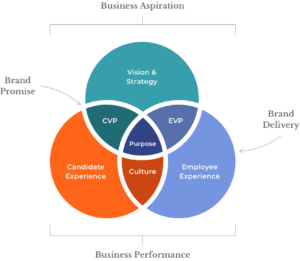Attracting the right developers, engineers, and other software professionals requires a well-oiled recruitment funnel. So what are best practices, common pitfalls, and actionable steps for each stage of the software team recruitment process stage?
Optimize each stage of your funnel, from crafting compelling job descriptions to conducting effective candidate attraction strategies and technical skills assessments. Keep reading to find out how Ubiminds, a leading Latin American recruitment specialist, can help you build your dream software team!
[ez-toc]Stage 1: Attract – Casting a Wide Net
Companies need to attract talent with the skills and adaptability to stay ahead of the curve and develop innovative solutions. Tech has an additional challenge in comparison with other industries: the demand for skilled software professionals far outpaces the supply.
Companies compete not just for market share but also for the best talent. A strong talent pool allows companies to build superior products and services, further propelling their market advantage.

Talent Marketing is an amalgamation of culture, strategy, assets and intentional actions. Image source: HCCR.
Stage 2: Engage – Assessing Skills and Fit
Software development heavily relies on intellectual capital and problem-solving skills. That’s how the human workforce directly contributes to the value of the product or service.
The ability to attract and retain talent with strong technical expertise and the capacity to learn and adapt is crucial for success. Skilled developers and engineers can create features and functionalities that differentiate a product in the market.
It’s also worth remembering that cultural fit is crucial for long-term success. Even a highly skilled candidate might not be a good fit for your company culture. Concerns about culture fit might surface after the offer is extended, leading to a difficult decision about rescinding the offer or potentially facing a short-lived tenure for the new hire.
Keeping top talent engaged avoids drop outs, and eventually allows companies to maximize the value delivered to their customers.
The Assessment Tightrope
Resumes and interviews can only reveal so much. Sometimes, a seemingly perfect candidate might not possess the specific technical skills required for the role after accepting the offer. This can lead to a period of retraining or even necessitate restarting the hiring process.
Remember that lengthy interview processes can be a disadvantage. Talented candidates might have multiple offers and get impatient with a slow hiring process. This can lead to them accepting another offer before yours goes through, leaving you with a vacant position.
Only with accumulated experience will you find the sweet spot. Want to learn more? Read also: How to Avoid (and Fix) Mistakes When Hiring Software Developers.
Stage 3: Hire – Closing the Deal
You may be asking: why is offer stage and hiring such a minefield in software companies? For one, candidates might use multiple offers as leverage to negotiate a better deal with their preferred company. This can be frustrating for companies who invest time and resources in the interview process only to lose the candidate at the last minute.
But even once a candidate receives an offer from you, their current employer might counteroffer with a higher salary, better benefits, or other incentives to retain them. This can be tempting for the candidate, leaving you back at square one in your search.
It’s important to remember there are legal considerations during the offer stage, such as ensuring compliance with salary disclosure laws and non-compete agreements. Overlooking these legalities can lead to legal trouble down the road.
By understanding these minefields, software companies can develop a more strategic approach to the offer stage and hiring process. This might involve:
- Streamlining interviews and setting clear timelines.
- Providing competitive offers upfront.
- Conducting in-depth technical assessments.
- Prioritizing cultural fit evaluation.
- Solidifying the offer with clear terms and expectations.
Take proactive measures to navigate the offer stage and hiring process more effectively, reducing the chances of losing top talent at the final hurdle.
Master the Recruitment Funnel: Attract & Hire Top Tech Talent in Latin America
The vibrant Latin American tech scene is teeming with skilled software professionals. But navigating the complexities of recruiting across borders and cultures requires a strategic approach. Ubiminds, a leading recruitment specialist in Latin America, can help you build your dream software team by optimizing each stage of your recruitment funnel.
- Latin America Expertise: We leverage our extensive network and in-depth knowledge of the Latin American tech ecosystem to target the right talent pool for your needs.
- Compelling Employer Branding: We craft targeted messaging that resonates with Latin American software professionals, showcasing your company culture and unique offerings to enhance candidate attraction.
- Localized Job Postings: We ensure your job postings are culturally relevant and optimized for popular Latin American job boards, maximizing visibility and attracting qualified candidates.
- Structured Interview Process: We develop a structured interview process that accurately assesses technical skills, cultural fit, and potential. This includes incorporating technical skills assessments to ensure a well-rounded evaluation.
- Multilingual Talent Acquisition Specialists: Our team includes multilingual specialists who understand the nuances of communication across cultures, ensuring a smooth interview experience for both parties.
- Time Zone Management: We account for time zone differences and offer interview flexibility to attract candidates from across Latin America.
- Competitive Offer Packages: We guide you in creating competitive offer packages that are attractive to Latin American software professionals, considering salary expectations, benefits, and career development opportunities.
- Streamlined Onboarding: We provide guidance on navigating legal requirements and cultural sensitivities to ensure a smooth and successful onboarding experience for your new hire.
- Post-Placement Support: Ubiminds doesn’t stop at placement. We offer ongoing support to ensure your new team member integrates seamlessly and thrives in your company.
Don’t navigate the complexities of Latin American recruitment alone.
Partner with Ubiminds! We have a proven track record of connecting leading companies with top software talent throughout Latin America. Contact us today and let’s discuss your specific needs.
Together, let’s build your dream team!

International Marketing Leader, specialized in tech. Proud to have built marketing and business generation structures for some of the fastest-growing SaaS companies on both sides of the Atlantic (UK, DACH, Iberia, LatAm, and NorthAm). Big fan of motherhood, world music, marketing, and backpacking. A little bit nerdy too!








